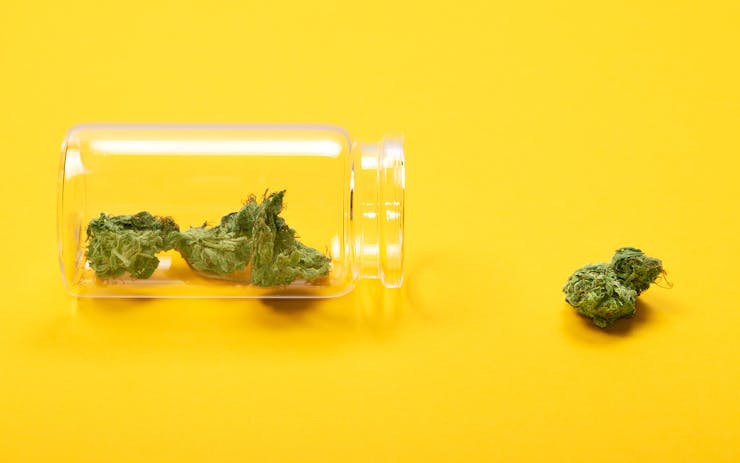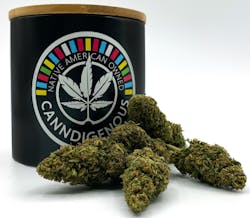As the CBD industry continues to surge, that market becomes more independent from the traditional (THC) cannabis industry. Companies are constantly looking for ways to bridge the gap between the classic consumer and the future way of weed.
One way is by putting a new age spin on a classic product. Lately, growers have been turning THC-dominant strains into a CBD-dominant or balanced strain.
Industry evolution
When the legal cannabis industry was first born in 2014, the market was all about THC products and seeking the most powerful high possible. That’s why there was so much emphasis on THC percentage, because consumers believed the higher that number, the better the high, though that is not necessarily true. Cannabis producers placed little-to-no focus on breeding, growing, or even researching CBD strains and genetics.
This has changed over time as the industry expands. Nowadays, the CBD market is such an unstoppable force that companies who reigned supreme in the THC game are looking for ways to convert.
Enter: THC-turned-CBD strains.
THC vs. CBD
By now you should know the difference between THC and CBD: THC will get you high, CBD will not. THC is viewed as the recreational weed and CBD is viewed as the medical weed, though both compounds certainly provide their own respective wellness benefits. With CBD, many people believe it to be the best treatment for various psychological and physical ailments.
Types of CBD cannabis strains
CBD cannabis comes in two forms: CBD-dominant and balanced. CBD-dominant strains contain CBD:THC ratios of 5:1 or more. With these, out of all the plant’s cannabinoids, CBD is the most pronounced, meaning effects will be more influenced by CBD than the other cannabinoids. ACDC, with its 14:1 CBD:THC ratio, is an example of a CBD-dominant cannabis strain.
Balanced cannabis strains hold a CBD:THC ratio between 1:1 and 5:1. This means you may still feel some degree of high as effects will be intensified by THC’s influence, but it should be wayyy less of a powerful high than a THC-dominant strain. Harlequin, with an average CBD:THC ratio of 2:1, is an example of a balanced cannabis strain.
Why turn THC strains into CBD strains?
Cannabis consumption is all about finding the most enjoyable experience, i.e., which aromas, tastes, and effects you prefer; some consumers want to get high, some want to a little bit, others don’t at all. With so few CBD cannabis strains on the market, consumers who aren’t chasing the high have extremely limited choices. Turning THC strains into CBD strains is a way to provide these consumers with more options.
Take Blue Dream for example. It’s the single most popular cannabis strain in all of the world. It will also get you stoned. If you’re a no-thanks-on-the-high type of cannabis consumer, you are now barred from experiencing the #1 strain in the world.
Sure, you avoid its potent and euphoric high, but you also miss out on its wonderful sweet blueberry-like smell and taste. By turning Blue Dream into Blue Dream CBD, producers are able to soften Blue Dream’s euphoric effects while preserving its terpenes, opening up a whole new world for the CBD-driven consumer.
How to turn THC strains into CBD strains
There are multiple ways a THC-dominant strain can become CBD-dominant or balanced. One way is through seed pheno-hunting. Cannabis growers will grow a bunch of seeds of the same strain into plants, then choose their favorite flower out of the bunch.
All of these different plants are phenotypes: They have similar genetics, but express different physical characteristics. In layman’s terms, you and your siblings are all phenotypes of your parents.
For a better understanding, I reached out to Lo Friesen, CEO and Founder of Heylo, a Washington-based processor and producer of EXCELLENT Blue Dream CBD and Green Crack CBD Pax Pods.
“Occasionally a seed will produce flowers that have expressed a cannabinoid profile with more CBD than normal. A grower could then choose this phenotype and continue to propagate these genetics via clones from the plant,” says Friesen.
The other, and probably the most common, way of turning a THC strain into a CBD one is to simply cross it with a high-yielding CBD hemp plant and then pheno-hunt for a favorite.
Lastly, relative to concentrates, you can add CBD extract to a THC extract and see how the CBD:THC ratios play out. While also common, this method is outside of the plant breeding realm described above.
The future of CBD cannabis strains
With CBD damn near becoming a household name at this point, I asked Lo if she thinks breeding THC strains into CBD strains will become more common. Short answer: yes.
“A lot of future cannabis users are looking for something to use with an active lifestyle. So, with CBD in the mix, a consumer can pass a vape or bowl around friends multiple times without overdoing the buzz—the equivalent to having a beer as opposed to a cocktail, but no hangover.”






